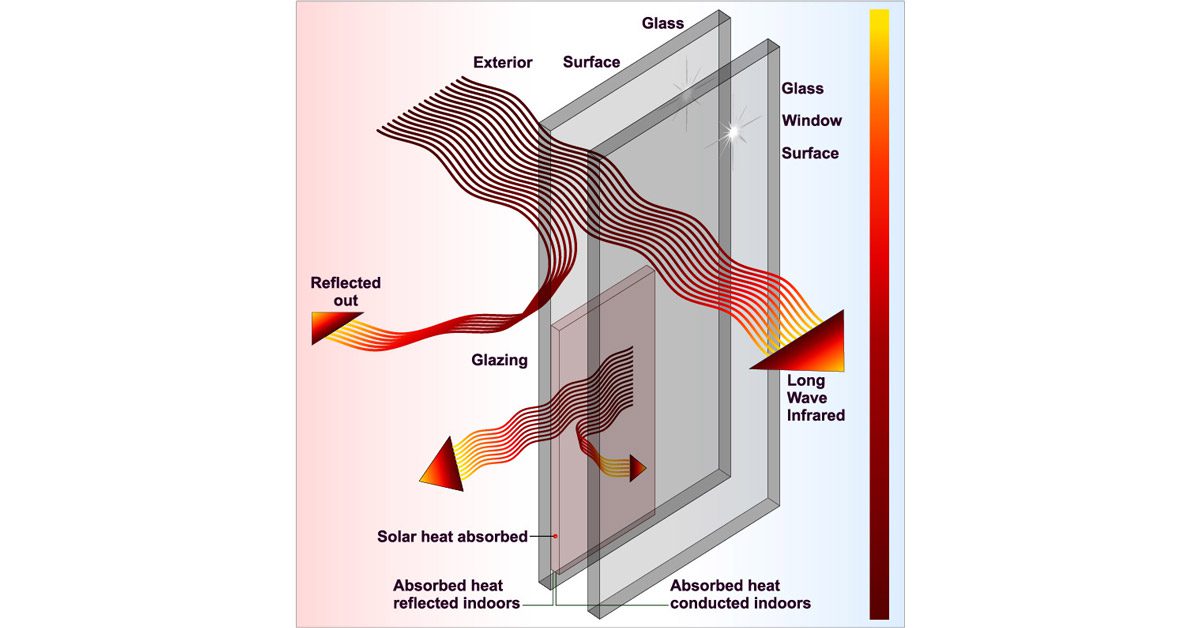All Categories
Featured
Table of Contents
Best Way To Block Sun Heat From Windows [Professionally] in Walliston WA
That window can send more solar heat in winter than in summertime. A west-facing window on a summertime's afternoon has an angle of incidence from near 0 as much as 30 with a big effective area of solar radiation. A north-facing window, in summer, has a high angle of occurrence and a low reliable area of solar radiation, so can transfer less heat than a west-facing one.

However you can rapidly and quickly enhance the thermal performance of your home by changing your windows. This is among the most efficient approaches of remodelling to achieve enhanced thermal convenience. There are thousands of types of glass and frames to select from. Choosing the ideal ones is essential to improving the energy performance of your house.
Double Glazed Windows In Melbourne in South Guildford Perth
Single glazing with clear glass is not really efficient when it comes to heat loss or gain. To improve performance, you can use single glazing with a more energy-efficient type of glass such as low emissivity (low-e) glass.
The energy efficiency of IGUs likewise depends on: the properties of each layer of glass. Various glass types (for example, clear and low-e glass) can be put together in an IGU.
What Are Double Glazed Windows? in Attadale WA

IGU cavities can be filled with air or a more inert, low-conductivity gas such as argon the width of the cavity. Cavity density is typically 6 to 18mm. Larger cavities offer lower (better) U values, with 12mm generally accepted as the preferred gap how well the cavity is sealed. Cavities should be dry and well sealed to prevent wetness getting in.
If argon is installed to the cavity in location of air, wetness is reliably omitted the level of desiccant (drying representative). The spacer (metal or polymer strip) that separates the glass layers contains a desiccant to soak up any moisture. Insufficient desiccant may trigger moisture to condense on the glass surface area in cold conditions, minimizing thermal efficiency.
What Is Double Glazing Windows And Doors? in Murdoch Perth
IGUs can provide better energy performance for all climates, particularly in heated and air-conditioned houses. Cross-section information of single, double and triple-glazing units Low emissivity glass (frequently referred to as low-e glass) reduces heat transfer. Low-e glass might be either high or low transmission: High transmission low-e glass has a finish that allows daylight from the sun to enter your home to attain excellent solar heat gain, but minimizes the quantity of the long wavelength infrared heat that can leave back through the window.
Low-e glass has either a pyrolytic finishing or a vacuum-deposited thin movie metal finishing. Pyrolytic finishings are durable and can be utilized for any glazing; vacuum-deposited coverings are soft and are just used within IGUs. Low-e finishes can significantly improve both U value and SHGC; nevertheless, they must be utilized properly or they will either degrade or stop working to perform as required.
How Are Double Glazed Windows More Energy Efficient? in Bedford WA
Low-e finishings can be utilized in combination with clear, toned or reflective glass. Low-e finishes on glazing can minimize heat transfer where needed Photo: Department of Industry, Science, Energy and Resources Toned glass has actually colouring additives included throughout manufacture. It is readily available in numerous colours, typically bronze, grey, blue and green.
Table of Contents
Latest Posts
Reasons Why Double Glazed Windows Are A Good Idea in North Fremantle Perth
Replacement Double Glazing - Upvc Windows in Kelmscott Perth
Reasons Why Double Glazed Windows Are A Good Idea in Wilson Western Australia
More
Latest Posts
Reasons Why Double Glazed Windows Are A Good Idea in North Fremantle Perth
Replacement Double Glazing - Upvc Windows in Kelmscott Perth
Reasons Why Double Glazed Windows Are A Good Idea in Wilson Western Australia